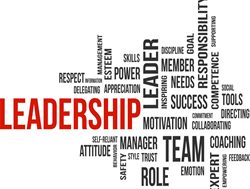Hareta McMullin* says the ability to lead through change is the most important skill for women in leadership to develop.
 It doesn’t need to be said but let’s call it like it is. Life and business is pretty tough right now.
It doesn’t need to be said but let’s call it like it is. Life and business is pretty tough right now.
Leading a team in the face of an economic downturn, rising cost of living, inflation, wars, regular “once in a lifetime” weather events, political distrust is complex. To say the least.
So, what is one defining success factor for women in leadership this year?
The ability to lead through change.
We hold high expectations of our leaders to be a steadying force amongst the chaos and rely heavily on them to lead their teams through crisis and change.
A big ask when also dealing with the complexities of budget cuts, skill shortages and retention pressures.
People are fatigued and leaders are juggling a lot.
As more employees turn to their employers for support, the emotional toll of being a leader in this climate is significant.
That said, the leaders who can withstand the pressure with grace, mobilise themselves and their teams, and communicate confidently and with empathy, are the ones who are going to stand out.
Why is it so hard to lead right now?
There’s a term that can help women reconcile what their role as a leader means right now.
VUCA is an acronym used to describe four external factors that have a huge impact on leadership and business.
They are factors that we must consider when we look at leadership capability and effectiveness in this climate.
They are:
- Volatility
The world is constantly changing, big and small changes are becoming more unpredictable, more dramatic and happening faster.
- Uncertainty
It’s harder to predict how things will unfold, meaning it’s more difficult to plan ahead.
- Complexity
Our modern-day challenges (and repercussions) are multi-layered and harder to understand.
Decisions are difficult and more reactive.
- Ambiguity
Situations are harder to interpret, are rarely black and white and increasingly contradictory.
What does this mean for women+ in leadership?
We are living through an enormous amount of significant, sustained and often difficult change at the moment.
Understanding this can help to take the pressure off.
Leaders aren’t “just” managing a team.
They’re leading through some of the toughest scenarios imaginable.
It requires resilience, adaptability, capability, empathy, and the space to think critically.
And let’s not forget.
They’re probably fatigued by it all too.
Leading through change.
So how do leaders make sense of all this change and communicate it to their teams so that they can support them through it too?
Part of the answer comes back to understanding how people respond to change.
Generally, people respond in a consistent pattern of three phases.
Being aware of these phases will help leaders anticipate how people will react and will help them prepare for conversations before, during and after change.
- Disorientation
Confusion, frustration and anxiety are expected reactions to change, and leaders can expect their teams to have questions and concerns e.g.
why is this change happening? What does this mean for me? What does this mean for the business?
- Reorientation
Empowered with information, people begin to feel more comfortable with the change.
This phase can be energising as people regain their confidence.
They may ask questions such as what can I do to help manage this change? What are the issues/priorities? What resources/support might I need?
- Integration
The change becomes part of the daily routine and simply ‘the way we manage things.’ Be sure to recognise and celebrate success at this stage.
Once a change has been integrated, people may begin to ask questions like what else can I do to make this change work? What other improvements might be made?
Source: The above information is based off the Kübler Ross’ Change Curve Model.
This is made more complex by understanding that everyone moves through these phases of change at different rates.
As we continue into a period faced with difficult decisions, how leaders communicate to their teams and bring them along on the journey, will be one hallmark of success.
Take note of how you respond.
As a general guide, people want to look at their leaders and see strength, calm and assurance.
They take behavioural cues from their leaders and how they respond will be largely influenced by how you respond.
At the end of the day, people want to feel hope.
Be that guiding light for them.
Every situation is nuanced. There is so much grey that will influence an appropriate course of action. Please note that I share these high-level thoughts, not as a blanket solution but to inspire reflection and action.
*Hareta McMullin is an award-winning HR professional who helps businesses drive commercial success, by developing confident leaders and reimagining the employee experience.
This article first appeared at womensagenda.com.au











